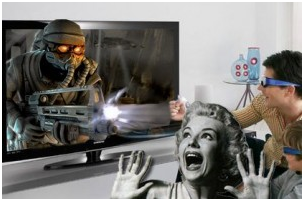As if we don’t care! What’s up with EA that made it scoop casual gaming giants? Since 2009, the California based game publishing giant, Electronic Arts, has acquired four casual and social gaming giants – namely PopCap, Playfish, Chillingo, and Ohai. It is quite evident that EA wants to spread its wings to social and casual gaming as there are high margin - low cost games that can be sold in millions of copies than console games generating high revenues and increasing the market share. In fact experts feel that EA has competence to setup its own casual/social gaming boutique for development. But this gallant feat can be very promising for casual gamers worldwide.
Sources has it that rumors about acquiring PopCap, publisher of jaw-droopingly successful Plants vs. Zombies and Bejeweled 3, for a billion dollars finally came true on Jul 13, 2011. For all those PopCap fans out there, this is a ‘good thing’ to be reckoned with. This means that PopCap’s plants and zombies have joined forces with EA’s NFL players (now, plants can shoot out footballs at zombies and it turns out to be a Plant Zombie Battlefield Bad Company). The open letter to PopCap players in PopCap site says that it gives them access to many more resources and greatly expanded global audience. Oooooh! Can’t wait for Plants vs Zombies 2! I hope the PopCap passport doesn’t go away. PopCap’s other successful games include Escape – The Emerald Star on PC and Zuma Blitz on Facebook.
In November 2009, EA reeled in a social gaming specialist Playfish for a net worth $400 million with the baseline acquisition price of roughly $275 million in cash and an additional $25 million in equity retention arrangements. This London based company boast a monthly active user base of over 50 million players across the globe. Most of Playfish’s titles are built for Facebook and MySpace, but has also plunged into iPhone and Android platforms. Some of the biggest games from the company are Pet Society, Restaurant City and Country Story.
A Cheshire based publisher known for the all-time addictive Angry Birds, is now acquired by EA. EA certainly wants to retain its leadership on Apple platform. Angry birds was sold more than 6.5 million units and this creative talent is perhaps what got EA interested in Chillingo. Though EA is resilient to the queries on purchase and is not responding to the pricing, sources say that EA netted Chillingo for $20 million.
Adding another arrow to the quiver, EA seemed to have acquired another social gaming company Ohai that is located in San Francisco for a lower price. The company is known for its social adventure epics that are massively multiplayer online games. On May, 2011 EA announced that they have agreed to buy Australia based mobile and online game developer Firemint with an undisclosed financial agreement. Firemint’s Real Racing on iPhone 4 is one of the first games to take advantage of the device’s high-res Retina display and gyroscope for enhanced gameplay.
EA has been conquering companies like Protoss ensnaring Zerg lands. Sure EA is rich enough, but the recent payoffs don’t reflect the sustenance of growth. Let’s hope that the upcoming acquisitions from the giant are employee-friendly.
Thanks for reading…
Written by Anirudh

































